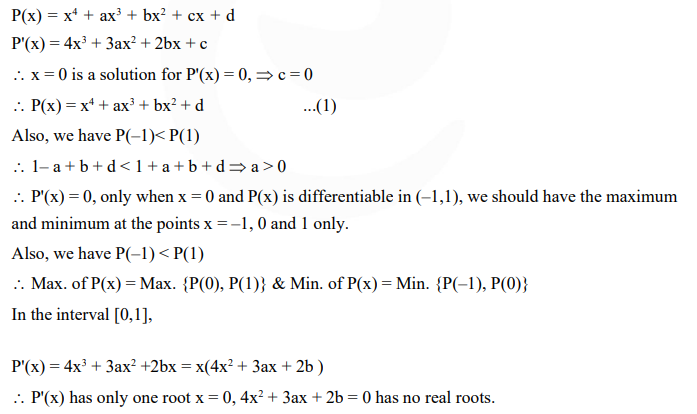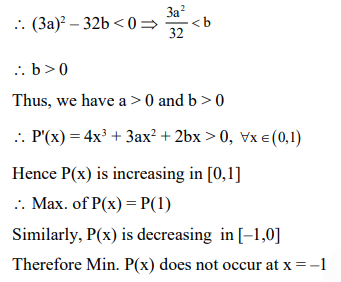Question:
Given $\mathrm{P}(\mathrm{x})=\mathrm{x}^{4}+\mathrm{ax}^{3}+b \mathrm{x}^{2}+\mathrm{cx}+\mathrm{d}$ such that $\mathrm{x}=0$ is the only real root of $\mathrm{P}^{\prime}(\mathrm{x})=0$. If $\mathrm{P}(-1)<\mathrm{P}(1)$, then in the interval $[-1,1]$ :-
Correct Option: , 4
Solution:


Click here to get exam-ready with eSaral
For making your preparation journey smoother of JEE, NEET and Class 8 to 10, grab our app now.
